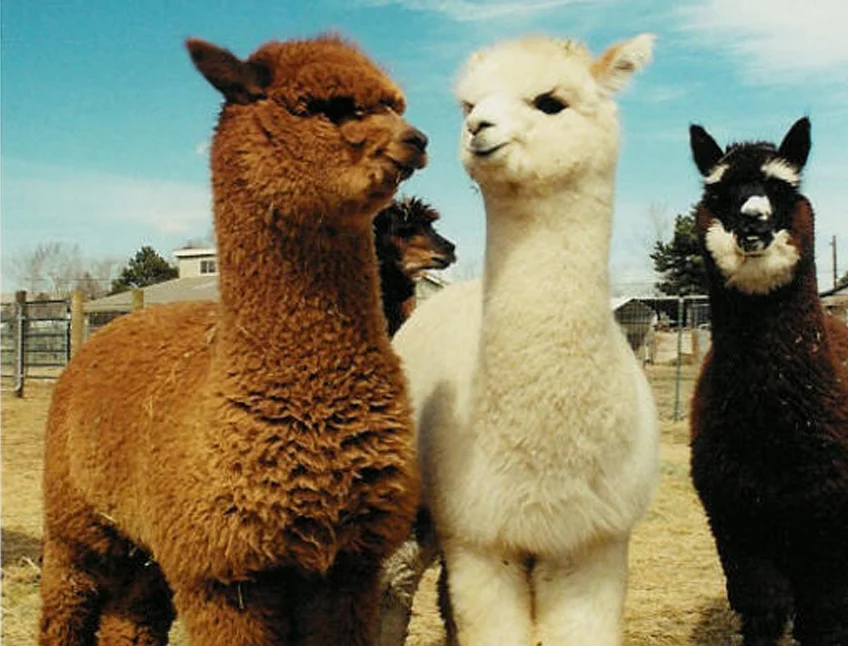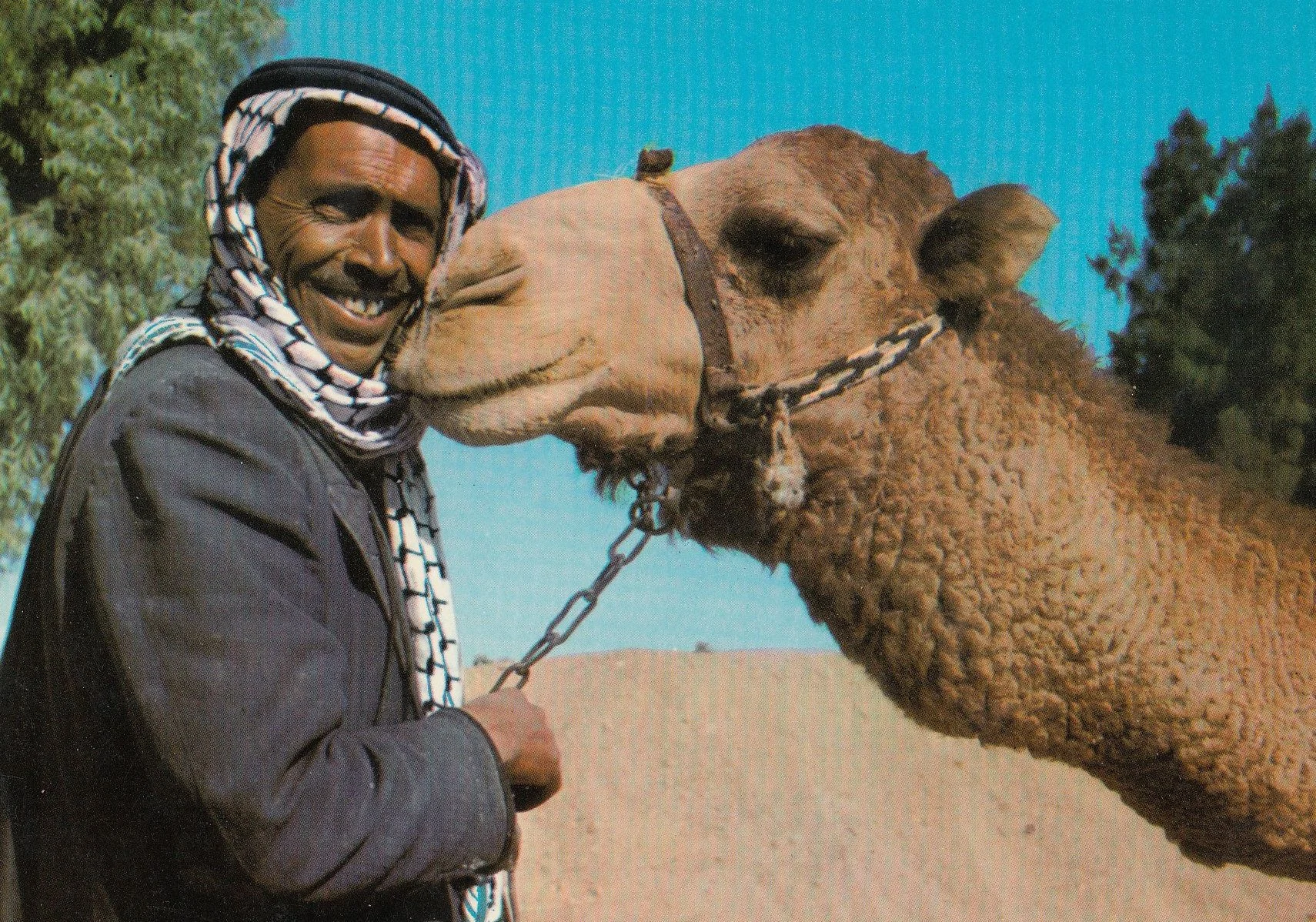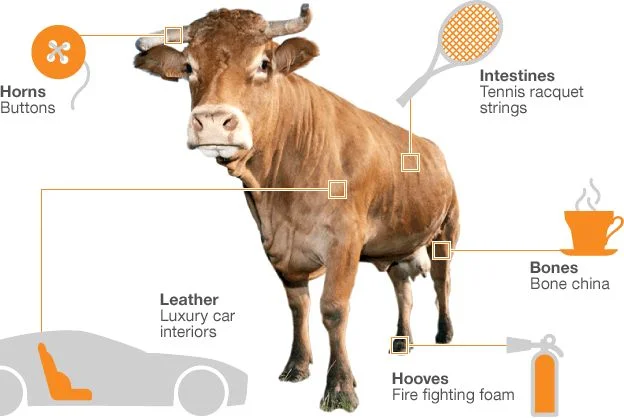By The Landlord
“My cow is not pretty, but it is pretty to me.” – David Lynch
“I'm a cowboy who never saw a cow.” – Johnny Mercer
“The Lord can give, and the Lord can take away. I might be herding sheep next year.” – Elvis Presley
“To rally every black sheep is my goal.” – Julian Cope
There’s something quite profound about being stared at by a cow. Is it thinking about you, or simply looking through you? Upon what is it pondering? Is it musing on a universe of infinite profundity, or just grassy cud-chewing banality? Cattle’s eyes are sensitive, deep, and undoubtedly sad. Their lives are a daily grind. But is that all they want, or all they are allowed? They put up with boredom and discomfort, and if milked, or separated from their young, regular, painful exploitation. And as for the slaughterhouse, let’s not even go there. They are essentially placid, but if you start to stamp the ground, trying to communicate with them (not quite like Mr Ed the talking horse), they will copy you, and then suddenly they all begin to stamp at once in a kind of cow parliament. I’ve tried it, from the other side of a fence in the countryside. It was weird, and a little scary. I stopped and then so did they, and we all carried on with our usual roles in the status quo.
But if I had continued, things might have been different. Imagine, before you know it, as the stamping on the ground begins to reach a bellowing, thudding crescendo, and they all start to walk towards you, lolloping gradually into a stampede, crashing through the gate, and you are suddenly now irrelevant, just another broken old gatepost, a mild inconvenience to be pushed out of the way by the huge momentum of a mob on the move, barely aware that you are being squeezed and squashed, crying out in agony, and then they just unwittingly stomp and crush your skull and bones into the blood-soaked mud as if you were no more than a daisy. So then, managing a large number of docile creatures is more dangerous than it looks. And so what are those cows really thinking? Quick! There’s a car coming. Perhaps Gary Larson might know:
Gary Larson: ‘This was more than just a cow - this was an entire career I was looking at.’
So this week our song topic stands, sits, ambles, or indeed stampedes into the field of four-legged livestock, which of course includes cows, bulls, all types of farmed or managed cattle, as well as sheep, goats, pigs, ox, donkeys llamas and alpacas and more.
Horses as a topic has been done before in the past, but if they are part of the livestock context, they can count too. Horses in this sense are the companions of hunters, the comfort of cowboys, the stock of riding schools, but have also cruelly used and abused for war. American songs may come up a lot, but there are many more from Norse myths to ancient Chinese calendars and Argentinian legend. They stand up when sleeping, which is strange indeed, and also, what is the secret art of horse whispering other than a bit of animal psychology?
Teenage girls are also often obsessed with horses – perhaps in a sexual way – as mythological muscle-bound, elegant, long-legged creatures with floppy fringes and big, melancholy eyes bounding through their imaginations like pop stars. Surely David Cassidy to David Sylvian, George Michael to Duran Duran's John Taylor, and the 90s herds of boy bands to Justin Bieber were all carefully preened and brushed as the pinup ponies of their day. But horses aren’t always very manageable even as livestock:
Careful with that Shire horse
But while there are likely to be many cowboy songs professing affection for their horse and its companionship up in the lonely mountains and down on the plains, surely the love for his camel by a bedouin in the desert must be just as profound:
True livestock love: bedouin and best friend
The husbandry and farming of domesticated animals has been part of the agricultural revolution for thousands of years, and so inevitably reference to them is sewn as much into our language and use of metaphor as much as in literal use. This could be in moral, mythological and various reference in the Bible and other religious texts to the politics of George Orwell’s Animal Farm, from pastoral folk to country and western music. So as well as being directly about any of these animals, songs can be just as much about our relationship with them. And of course there are also herds of idiomatic reference, from behaving like sheep, to being innocent like lambs, or being led to the slaughter, to getting your goat.
Any songs instantly leap out?
Livestock are inspiration to many artists in all sorts of ways, even in the practical context. “I think I could sing and shear a few sheep at the same time,” says Robert Plant.
“All the good ideas I ever had came to me while I was milking a cow,” adds the American painter Grant Wood.
But more metaphorically: “Books are no different from goats! They enjoy an afternoon out on the lawn,” quips the author Kate Bernheimer.
Don’t forget donkeys
From art to literature and more, there rich history in reference to livestock. Oliver Cromwell wrote how the lifestyle of animal farming might have been a preferable choice to all the stresses of achieving the profound mark he left on English history: “I would have been glad to have lived under my wood side, and to have kept a flock of sheep, rather than to have undertaken this government.”
So here then is an inevitable political parallel with management of livestock and people. The writer Colin Wilson put it that: “The average man is a conformist, accepting miseries and disasters with the stoicism of a cow standing in the rain.”
But who is passive, and who is active? Who is managed and who is managing? Here’s the Kinks’ Ray Davies: “Money and corruption are ruining the land, crooked politicians betray the working man, pocketing the profits and treating us like sheep, and we're tired of hearing promises that we know they'll never keep.”
Meanwhile Alexander The Great put it from his perspective: “I am not afraid of an army of lions led by a sheep; I am afraid of an army of sheep led by a lion.”
But one of the most enduring themes in song and other forms is a simple affection for such animals. The cowhand or the shepherd see them as more than just animals.
Here’s Thomas de Quincey: “Cows are amongst the gentlest of breathing creatures; none show more passionate tenderness to their young when deprived of them; and, in short, I am not ashamed to profess a deep love for these quiet creatures.”
The great English painter George Stubbs was best known for his horses, but can there be a greater affection for an animal in art than this of the massive Lincolnshire Ox?
The Lincolnshire Ox by George Stubbs
Or indeed this depiction of the Gloucester Old Spot, thought to be the biggest ever pig reared, weighing more than 600 pounds, painted by John Miles in 1834.
Gloucester Old Spot by John Miles, 1834.
Pigs are clever, but are any cleverer than the South African painter Pigcasso, whose work regularly sells for thousands of dollars?
Hmm. Abstact Expressionism? Pigcasso is what you might call creative livestock.
Sometimes the table is completely turned, and the livestock really do manage the humans. Perhaps is the very opposite of livestock, in the form of the sacred and divine in Hindu India. But how does it sit with the modern world?
By contrast, “The cow is of the bovine ilk; one end is moo, the other milk,” wrote Ogden Nash. A lovely line, but it’s not that simple. But aside from beef cattle, it is for far more than that in western farming:
Cow parts
“Don't have a cow, man.” is a phrase Matt Groening coined for The Simpsons’ Bart. But perhaps literally not having a cow might ultimately be the only answer for our future. Aside from the cruelty aspect, meat production in all forms is ultimately a huge environmental problem, not merely because of massive deforestation, but also for its other source of greenhouse gases. As the actress Zazie Beetz puts it: “Agriculture is one of the biggest causes of greenhouse gases in the atmosphere. Cars? Planes? Trains? Nope. Cow farts.”
So perhaps in years from now, meat and other animals products might seem an anachronism, and be all artificially produced, and managed livestock might be seen as a weird antiquity of a more brutal age of ignorance. Like thumbscrews or the ducking stool. But still, at least they are the source of many great songs.
Finally though, for further inspiration, please refer to this the latest Word of the Week, which by complete coincidence, is kulning, the Scandinavian art of herd calling, mainly by female voices, often haunting and beautiful. Here’s a sample:
Managing the lively livestock of these week’s potential playlists, and herding your songs into hopefully comfortable surroundings, I’m delighted to say that this week’s farmer in chief is the wise and witty George Boyland aka sonofwebcore. Place your livestock songs in the pens (comments box) below, in time for last-orders deadline on Monday 11pm UK time, for playlists published on Wednesday. Time to trot on …
New to comment? It is quick and easy. You just need to login to Disqus once. All is explained i in About/FAQs ...
Fancy a turn behind the pumps at The Song Bar? Care to choose a playlist from songs nominated and write something about it? Then feel free to contact The Song Bar here, or try the usual email address. Also please follow us social media: Song Bar Twitter, Song Bar Facebook. Song Bar YouTube. Subscribe, follow and share.











